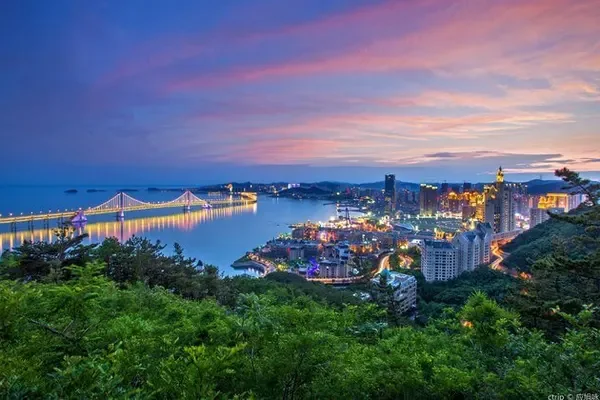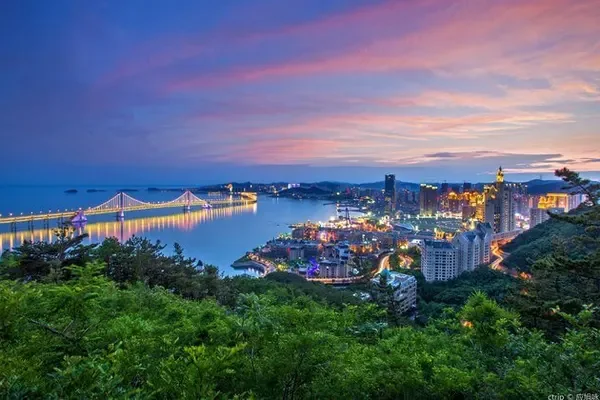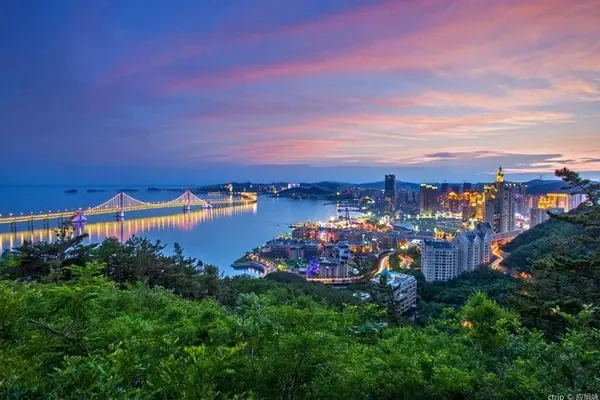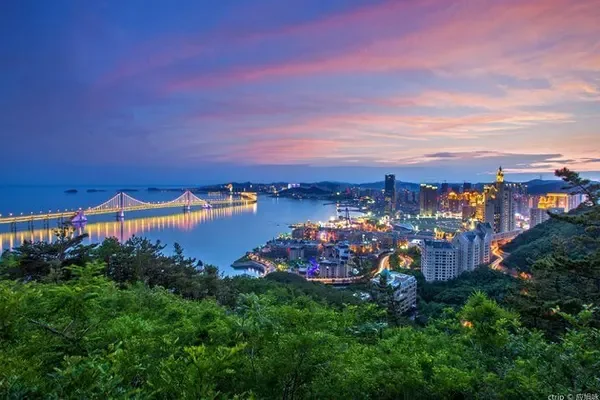
July 29, the 19th day of the trip. The weather is very hot, rest at the hotel, take a taxi to Kazanqi Folk Village at 5 pm.
Yining City is the capital of Ili Kazakh Autonomous Prefecture. Kazanqi Folk Custom Tourist Area is the only large-scale original ecological cultural scenic spot in northern Xinjiang with Uyghur ethnic customs as the main body. The original traditional Uyghur way of life is still preserved here: antique Uyghur dwellings; poetic small bridges and flowing water; tall and simple poplar trees can be seen everywhere. This is actually an old city with no walls or gates, and more than 100,000 people live here. Cars, electric cars, motorcycles, and bicycles can all go, but the most distinctive feature is the "horse carriage". We walked in, because it was too big, and we only walked a few streets according to the signs, which was quite tiring.
The houses on both sides of the street have ethnic characteristics, and there are many "home visit sites" for tourists to visit. The home visit sites (houses) are all very beautifully decorated, but to visit the home visit sites, you can only enter by taking a "carriage" with a tour guide. Not allowed to go in and visit.



















After getting out of Kazanqi Village, take a taxi to Liuxing Street to have a look. In the car, the driver recommended a noodle restaurant that locals often go to. When I arrived at Liuxing Street, there were quite a lot of people. I walked along one of the streets to the center and stopped walking. I was really tired.
Liuxing Street is an ancient block in Yining City. It was built in the mid-1930s (1934-1936). According to the six major policies (anti-imperialist, pro-Soviet, ethnic equality, peace, construction) , clean and honest) concept, planned and designed by German engineer Vasli. The plan of the block is circular, with six main roads radiating from the center, dividing the block into six fan-shaped areas. The center is public buildings such as schools, shops, and mosques, and the periphery is residential areas, forming a unique living pattern.





Coming out of Liuxing Street, I went to eat at the place the driver said. Sure enough, there were many people, and there were also many taxi drivers eating. We ordered the old brand minced pork noodles and Ding Ding fried noodles, 18 yuan per serving. After dinner, it was already 10 o'clock in the evening, and I took a taxi back to the hotel to rest.



July 30th, the 20th day of the trip. According to the planned itinerary, we will take the Yizhao Highway from Yining to Zhaosu on this day. Because I went directly to Yining from Sailimu Lake, I didn’t go to Khorgos Port. I was a little bit unwilling, so I decided to go and have a look. Departure at 7:30 in the morning, the whole journey is high-speed, and it will arrive at 9:00.









Arrived a bit early, inquire about it, the switch is opened at 9:30, and tourists can only enter at 10:00. It happened that someone who did nucleic acid did the nucleic acid first, and hadn’t done it for 4 days, and the nucleic acid could be done within 7 days in Yining. Waiting in line to enter the certificate processing hall. During the queuing process, I heard the person maintaining order say that today I have to do nucleic acid to enter. I didn't know the reason at the time, but I had already done it anyway.
The door opens at 10 o'clock, first go to the lobby to apply for an entry and exit pass, and then follow the flow of people through the security check to enter the China-Kazakhstan International Cultural Tourism Zone, also known as the China-Kazakhstan International Cooperation Center. The cooperation center is built on the China-Kazakhstan border. We actually wanted to take a look at the national gate on the border between China and Kazakhstan. With the entry and exit permit, we thought we could really go abroad. We were naive. After walking in for a while, I realized that the cooperation center is full of duty-free shops, which are mainly for shopping. Due to the epidemic, only a few shops are open, and most duty-free shops are closed. You can take the shuttle bus and go to the innermost duty-free shop for shopping. We had no intention of shopping, so we walked in, and we were the only ones walking. After entering the first duty-free shop on the side of the road, I took a look in the lobby and came out.








Walking along the Transnational Avenue, I thought I could reach the gate of the country. There was almost no one on the road, only a few sanitation workers and police patrolling in police cars. We also asked the police, what is the main purpose of coming here? The police replied, here are all duty-free shops, just to buy things, the national gate is not here, it is outside. We were quite surprised. After applying for an entry-exit pass, we obviously came to visit the country, so why are we still outside.




After walking for a while, I saw a building that looked like a national gate. I asked a sanitation worker, and she told us that this is the connecting channel between China and Kazakhstan, and it has been closed for three years because of the epidemic. After thinking about it, I roughly understand that this channel connects the tourist areas of China and Kazakhstan. It not only transports goods, but also serves for the exchange of people. When it was opened before the epidemic, with an entry-exit pass, you can travel from here to the Kazakhstan side for tax exemption. shop for shopping.

If you don't go shopping in duty-free shops, there is really nothing to see in the China-Kazakhstan International Cultural Tourism Zone. We didn't go any further and went back to exit the customs. When we exited the customs, the entry and exit passes were confiscated. The connection channel is closed, and the areas entered are all on the Chinese side. I don't know what the significance of the permit is.
Next to the parking lot is actually the National Gate Scenic Area, which includes the fifth-generation national gate of Khorgos, the No. 18 boundary marker of the Qing Dynasty, the 324 boundary marker on the Sino-Kazakh border, and the termination marker of the Lianhuo Expressway. You can buy tickets to visit. Because we had to go back to Yining and take the Yizhao Highway known as the "Little Duku" to Zhaosu, we didn't go in for a visit. We took pictures of the gate at the gate and drove on the road.
The gate that Khorgos passes through is the sixth-generation gate. It is in another place and cannot be visited.




We left Khorgos Port at nearly 12 o'clock, and went to visit the ancient city of Huiyuan on the way as planned. Arrived at Huiyuan Ancient City parking lot at 1 p.m., it was raining.



The ancient city of Huiyuan is located in Huocheng County, Ili. In history, Ili was an important passage from Xinjiang to Central Asia. In order to strengthen the governance of the Yili area, Qianlong in the Qing Dynasty set up General Yili here, built Huiyuan City, and successively built around it. Eight satellite cities are collectively referred to as "Ili Nine Cities". Huiyuan City, known as the head of the "Nine Cities of Ili", is better preserved now, and the former site of the General's Mansion is still preserved in the city. The name "Huiyuan" was bestowed by Emperor Qianlong himself, which means that the kindness of the Qing emperor would benefit far away.
The main purpose of going to Huiyuan Ancient City is to see General Yili's Mansion, and the ticket is 45 yuan. The weather is bad, there are not many tourists, and the building is relatively new. It should be rebuilt on the original site, and it is a national key cultural relic protection unit.


The two stone lions at the gate of the General's Mansion lie prone and look majestically. The delicate shape of the southern stone lions and the rough carving skills of Xinjiang are integrated. They are different from the ferocity and majesty of the general northern stone lions, and they appear simple and naive. It's really different from what I've seen before.




After coming out of the General’s Mansion, we walked forward in the rain until we reached the Confucian Temple, which was very small and new, but we didn’t go in. Go back to the side of the road and look at the Bell and Drum Tower in the middle of the road.


Leaving Huiyuan Ancient City, continue walking towards Zhaosu, passing Xibo Ancient City, parked in the parking lot, just looked outside, did not go in.





Leaving the ancient city of Xibo, we continued to walk forward. We were stopped by the traffic police just a short distance away and told that the Yizhao Highway was closed due to the rain and danger in some sections. Yizhao Kilometer is known as the "Little Duku" highway. It is closed and cannot be walked, which is quite disappointing. Because I don't know how long it will be closed, and I can't wait, I made a big circle, passed through Turks, and then went to Zhaosu. Arrive at Zhaosu County at 8:00 p.m.
















When I arrived in Zhaosu at 7:30, I saw a large field of sunflowers on the side of the road. It was really beautiful. There was a parking area on the side of the road. I stopped to take pictures. I wanted to use a drone to take a picture, but the connection with the mobile phone failed.



When checking in, the waiter first checked our nucleic acid, and told us that there was an epidemic in the 62nd regiment, and the nucleic acid should be done first tomorrow morning. Only then did I understand why nucleic acid must be done at the Horgos port. Put down your things and go to Tianma Food Street for dinner. On the way, you pass a square where RVs camp. Walking around the food street, I really didn't see anything I really wanted to eat. I hadn't eaten the sliced slices, so I went into a restaurant, ordered a fried beef with green onions, and two bowls of sliced slices. Pulled slices are called noodles, but they are smaller, probably due to different techniques. We cut them with a knife, but here they are picked by hand. The taste is different, just taste it.








